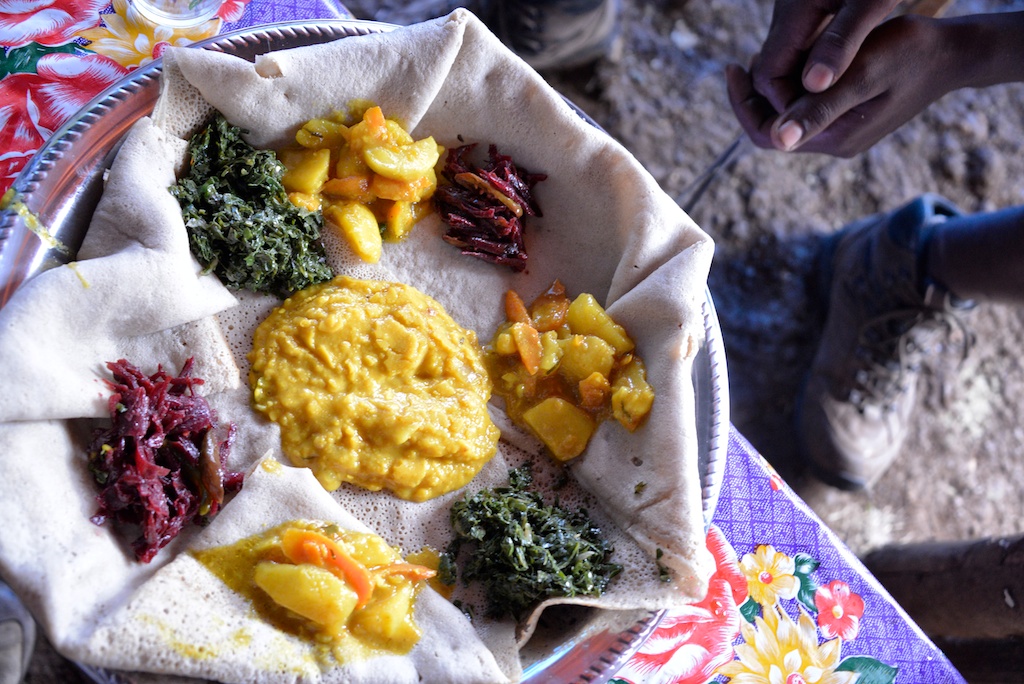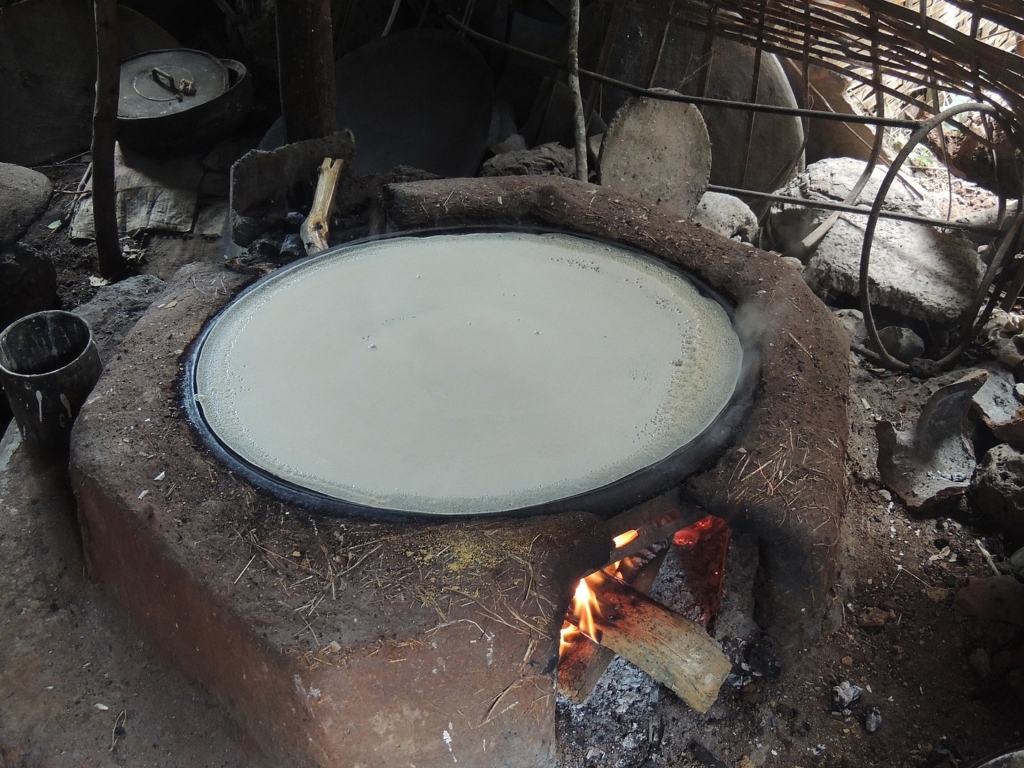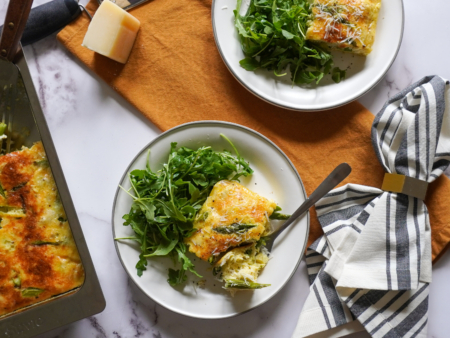It’s a bread. It’s a utensil. It’s injera! Experience the unique flavor and spongy texture of this Ethiopian and Eritrean staple.
What is Injera?
Injera is a spongy flatbread, thicker than a crepe but thinner than a pancake, made with a naturally fermented starter. It’s traditionally made from teff, an ancient grass native to the Horn of Africa. Eaters tear the injera into pieces throughout the course of the meal and use it to scoop, wrap, or sop bites of food, making injera both food and utensil, and often, the plate as well. Some sources say injera is Ethiopia’s national dish, while others say it’s part of the national dish alongside the spicy chicken stew doro wat. Either way, injera is an integral part of many dishes that typify Ethiopian and Eritrean cuisine.
What does Injera taste like?

Its natural fermentation process, much like the fermentation involved in making sourdough bread, gives injera a distinct sour taste that cuts right through the rich, highly-spiced meat, lentil, and vegetable dishes served with it.
Injera Nutrition
Nutritious teff seeds are high in protein and fiber, and naturally gluten-free. Injera, in addition to being gluten-free, is dairy-free and vegan.
How to cook Injera

Teff flour is mixed with salt and water and fermented overnight (or longer, with some recipes calling for a fermentation period of three or four days). Natural fermentation processes can be influenced by temperature, timing, and airborne particles, so the best indicator of fermentation is a pleasant sour smell and bubbles in the batter.
The thin batter is poured onto the cooking surface, historically a clay plate over a fire, now commonly a skillet or specialized stove. It looks like a crepe at first, but through cooking will become spongy and develop the bread’s signature porous top surface.
Color and texture of the finished flatbread depends on the variety of teff used (from white or ivory, to red, to dark brown), and on the presence of any other flour in the batter. Many injera recipes combine teff with another flour, though adding a flour with gluten will drastically change the texture of the finished product. The Splendid Table offers an injera recipe made entirely with teff flour.
Eating Injera
Traditional meals that include injera are eaten family style, in which a large piece of injera holds a variety of vegetables, salads, and saucy stews. Diners use their right hands to tear portions of the flatbread, which serves as a vehicle for bites of food. The injera’s signature spongy texture and porous top surface makes it ideal for sopping up savory liquids. It would make an excellent accompaniment for our Key Wat recipe, a spicy beef stew common to Ethiopia and Eritrea.
Where to find Injera
Injera is best when fresh, so a trip to an Ethiopian restaurant may be your best bet. Or, try your hand at making your own with simple recipes from Mark Bittman or The Spruce Eats. Just be sure to plan ahead for the fermentation time.
Feature Image: Flickr user avry (CC BY-SA 2.0)



